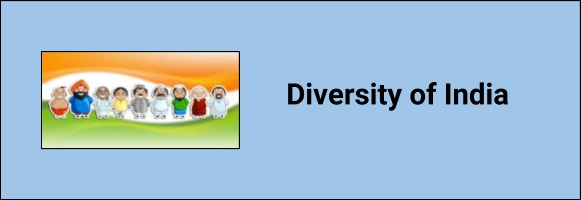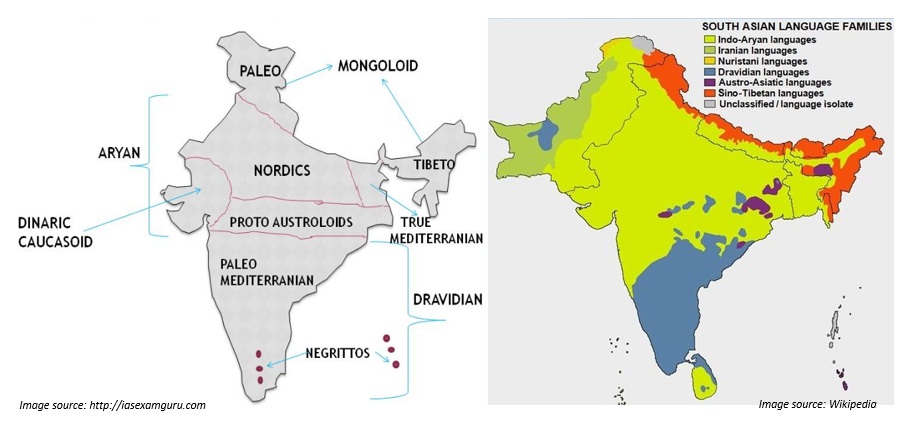
Diversity of India : Important Topics for UPSC Exams
India is known across world for its diversity. It is home to largest number of different socio-cultural groups based on race, religion, language etc. When India got independence, many political thinkers had commented that democracy in India will not survive because it’s too diverse to be united as a single nation. However they have been subsequently proved wrong. What distinguishes India from other diverse nations is its unity that has stayed despite various conflicts that exist in the society.
Basis of diversity and its distribution
Language
It is the most prominent feature of India’s diversity and in past has been a major source of unrest. There are more than 1600 languages spoken in India as recorded by 1961 census. Of then 22 are the official languages have been recognized as official languages under 8th schedule and about 197 are endangered. Indian languages are broadly classified under the following families:
-
Indo-Aryan language family: Languages like Hindi, Sanskrit, Urdu, Bengali, Kashmiri, Marathi etc. are part of this family and are spoken in most of the part of North India
-
Dravidian language family: Malayalam, Kannada, Tamil and Telugu are the prominent languages under this family spoken in the southern states
-
Austroasiatic language family: most of the tribal languages spoken in Chattisgarh, Jharkhand, Odisha are part of this family e.g. Khasi, Santhali, Meitei
-
Sino-Tibetan language family: Languages of the north-eastern state like Assamese, Manipuri, Bodo etc. constitute this family
-
Ohers: Other languages like Andamanese, Sentinelese are restricted to small number of speakers and therefore face extinction
Language has been the major issue of conflict in the past like:
-
Demands for state reorganization after independence based on languages – finally accepted through State reorganization act 1956
-
Dravidian and anti-hindi movements against the imposition of Hindi as the official language and in schools under the 3 language formula
-
Recently, it was the basis for Gorkhaland agitation




